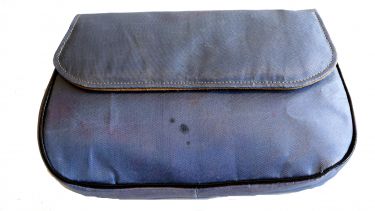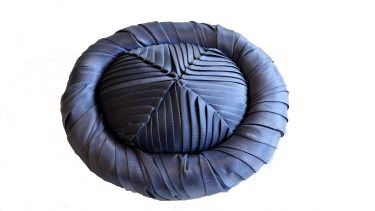Discover the Collection
Professor William E S Turner was arguably the most knowledgeable person of his era on the history of glass. His collection of glass objects, acquired throughout a lifetime of travels and research during the first half of the twentieth century, makes up the basis of the museum’s exhibits.
The collection has continued to grow through acquisitions and donations, such as the collection of eighteenth-century drinking glasses donated by Albert Harland in 1943.
The collection has been catalogued and categorised based on their age and their provenance. There are over 380 pieces on permanent display including:
- Bohemian, Czechoslovakian, Scandinavian, French and Dutch Glass
- ltalian Glass from Murano, Venice
- Experimental works by Frederick Carder manufactured at Corning in New York State, USA
- Roman and Syrian Glass British Glass including pieces by John Moncrieff Ltd, James Powell and Son Ltd and Webb Corbett Ltd.
- Studio glass pieces by Sam Herman, Anne Warf, Anna Dickinson and Keiko Mukaide.
- The glass fibre wedding dress and accessories worn by Helen Nairn Munro when she married Professor W.E.S.Turner.
Object Highlights:
- Jacobite Wine Glass: ID: 171
by Ella Barrett, MA History student
This Jacobite wine glass has a drawn trumpet bowl is engraved with a rose bud with two oak leaves, an open rose with closed bud and two leaves. The stem includes multiple series air twist technique and a plain conical foot.
Several wine glasses in the collection symbolise visual elements that represent the Stuart monarchy. This particular glass is a key example: the engraved rose buds, oak leaves and closed buds all signify the House of the Stuarts.
The inclusion of the oak leaf references the escape of King Charles II during the English Civil War in 1651 and is a symbol of restoration and regeneration. It connects the complicated relationship between the Stuarts and the English Crown.
The air twist in the stem was the style in vogue in 18th century glassmaking. All English ‘air twists’ rotate in the same direction, with the glass blowers using their right hand to hold and rotate the pontil (iron rod used to shape the soft glass) in one direction while twisting the stem with their left, differentiating their production from other styles around Europe during that period.
Fact about the Stuart Dynasty:
Toasting to an overthrown King was a common but secret celebration in the 18th century. Following the transition of the Royal Houses from the Stuart Dynasty to the Oranges, the 1688 Glorious Revolution restructured English society.
Historically, the widespread production of tyrannous wine glasses symbolises an important period within British History known as ‘Jacobite’, where members of the public supported the return of King James II of Stuart House.
- Fibreglass Wedding Dress and Accessories: ID: 363
On permanent display at the museum, is the wedding dress and accessories which Helen Nairn Munro wore for her marriage to Professor Turner in 1943. A renowned artist and glass engraver, Helen taught at the Edinburgh College of Art by establishing the first glass engraving department there in 1941.
The dress was made specifically for the occasion in fibreglass, made and presented to Helen by Glass Fibres Ltd. The dress is full-length in pale blue and is displayed with accompanying hat, shoes and bag, all made from fibreglass and worn by Helen on her wedding day. There are only a few wedding dresses like this one in existence, making this object in the Turner Museum of Glass a unique piece within the collection.
We are often asked 'why doesn't it break?'. As we all know glass breaks easily but glass breaks only under tension and almost always from surface flaws. A process called thermal toughening creates a surface which goes under compression. Much higher loads are needed before a glass sheet is bent sufficiently to generate surface tension and fracture. This is the basis of toughened glass windscreens and the mottled pattern you see in windscreens when wearing sun glasses, these arise from the presence of these stresses. We can create a similar effect by diffusing large potassium ions into a glass sheet in exchange for small sodium ions. If we do this at a low temperature when the glass cannot flow then the glass surface is placed under tension. But the second point is that we need to have some surface damage from which a crack can start. If we can make a perfect glass surface we can make it much stronger perhaps able to stand stresses as much as 100 to 1000 times greater than normal.
So what about glass fibres on our wedding dress and accessories? Well, there are no extra surface stresses. Thermal toughening mentioned above, wouldn’t work because the fibres are so fine that the outside cannot be cooled faster than the inside. The fibres are however made at high temperature and are usually coated with a thin ‘protective’ layer immediately after manufacture. So they are relatively flaw free. More importantly though being very fine, bending them does not introduce significant stress as it would in a thick sheet of glass. So the fibres that were used for the wedding dress and accessories, of which there would need to in a bundle of at least 100 to be as thick as a human hair, could be easily woven into fabric to make the shoes, handbag and dress. Unfortunately just here and there, the fibres were weak enough and the stresses high enough to cause failure and the dress proved very uncomfortable to wear for long periods.
The pale blue colour has nothing to do with the glass itself but is due to additives in the coating. Because glass is an inorganic material with largely ionic bonds it does not bond well to polymers which have largely covalent bonds. This to make coatings that adhere firmly often requires special chemistry, perhaps in the form of an intermediate coating.
The fibreglass dress, shoes, hat, and handbag provide a romantic gesture from a renowned University Professor who wanted to demonstrate his love for his bride in a somewhat unconventional way. The dress proved hard to make and was only delivered 10 minutes before the ceremony according to a press release at the time. The marriage lasted from 1943 until Professor’s death in 1963 and the dress and accessories remain in very good condition and is on display in the Turner Museum of Glass.










